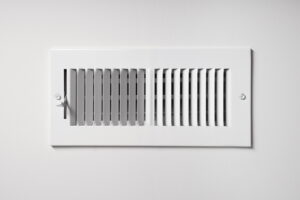
If you’re reading the headline and thinking that it doesn’t sound possible, we can assure you that there is a way to get around the problem of allowing fresh air from the outside to enter your home, sweep out the stale air, and not end up bringing in either the heat or the cold. It’s not magic—in fact, the technology works on a simple premise where you use the air inside your home to heat or cool the fresh air you bring into it.
And the way it works is through devices called energy recovery ventilators and heat recovery ventilators. If you’re looking for a way to enjoy fresher indoor air without also breaking the bank on AC or heating costs, this might be the installation you’re looking for.
The Basics of HRV and ERV Systems
Energy recovery ventilators (ERVs) and heat recovery ventilators (HRVs) use a process called counterflow heat exchange to pre-cool or pre-heat fresh air brought from outside the house. The ERV/HRV is integrated into the ventilation system and can draw currents of outdoor air into the HVAC system. At the same time, the ERV/HRV pulls a current of stale air from inside the house and runs the two current past each other. Heat transfers from one the other, warming up one current and cooling the other. The stale air is then exhausted outside and the fresh air enters the house.
We’ll give an example of an ERV at work during a summer day. The ERV pulls in fresh outdoor air that’s around 90°F, while simultaneously drawing in stale indoor air that’s around 78°F. The two currents move through the ERV and come into contact with each other. The heat naturally moves from the 90°F air to the 78°F air, which causes the hotter air to cool down. This fresh air then goes into the house, already cooled down so the air conditioner doesn’t have to do as much work, while the stale air goes outside. In cold weather, the process just flips: the fresh and cold outdoor air picks up heat from the stale and warm indoor air.
Essentially, these devices “recover” the energy you used to heat or cool your home and then uses that energy to heat or cool the incoming air. Fresh air and energy savings in one.
Is There a Difference Between the Two?
Yes, there is a key difference between an HRV and ERV, which is the transfer of moisture. An ERV allows moisture to move between the two currents, so there is some humidity balancing as well, which can be helpful during humid days. On the other hand, an HRV can work more effectively in colder temperatures. The type that’s best for your home is something our technicians can help you find out.
We’re the Little Rock, AR, HVAC contractor you can trust for HRV/ERV installation as well as other indoor air quality solutions. We can keep your home comfortable and its air fresh.
Dewees HVAC is here to keep you comfortable. Call us for IAQ services and other comfort needs in the Conway area.
